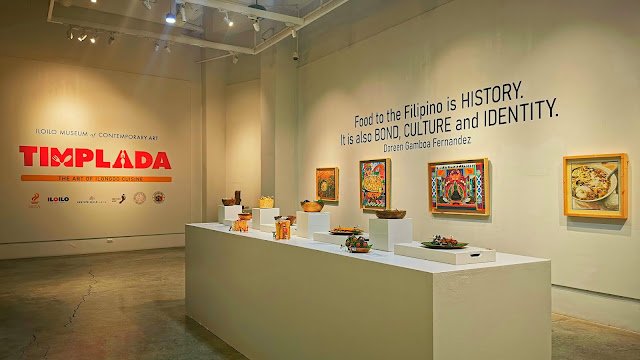How Iloilo Became a UNESCO Creative City for Gastronomy
/Iloilo City skyline from esplanade
Philippine media glowed with congratulations, running accompanying photos of “signature” Ilonggo dishes: the eponymous La Paz Batchoy and Pancit Molo, both named after two of the city’s districts. Both are Chinese-influenced.
UCCN cities are acknowledged for their strong commitment to harnessing culture and creativity as part of their development strategies, and displaying innovative practices in human-centered urban planning.
With the latest additions, UCCN now counts 350 cities in more than 100 countries, representing seven creative fields: Crafts and Folk Art, Design, Film, Literature, Media Arts, Music, and Gastronomy.
Iloilo’s Batchoy is a delectable and savory noodle dish made from innards, beef and pork strips, sprinkled liberally with chicharon (pork crackling). A dash of Ilonggo “ginamos” (shrimp paste) gives it that special touch, and it tastes better in the afternoons when flavors have settled.
La Paz Batchoy
Pancit Molo is basically a pork dumpling soup, minced pork flavored with salt, pepper, garlic and chives, and then cooked in a chicken broth. The dumplings are hand wrapped, shaped like a nun’s wimple. Varieties of beef batchoy and chicken pancit Molo are also available.
Pancit Molo with lots of chives
Then there is Kadios-baboy-langka (KBL), a hearty soup of pigeon peas, pork, and young jackfruit, made slightly sour with batwan (garcinia binucao) or libas (spondias pinnata) leaves, both widely used as souring agents in Iloilo.
Kadios-baboy-langka (Source: Filipino Food Month/Facebook)
Then of course there is Native Chicken Inasal (grilled native variety or “darag” chicken) which unlike the supermarket version, is a free range, smaller and less fleshy, but tastier; the marinade uses tuba (fermented young coconut juice). Iloilo also has the humble, supremely healthy and easy to cook Laswa, similar to bulanglang. Some other dishes often associated with, though not necessarily of Ilonggo (Panay) origin, are Tinu-om, Binakol, Kansi, Lauya, and Kinilaw.
Chicken Inasal (Source: Wikipedia)
Lively Debates
Lively discussions ensued about where is the best Pancit Molo (Kap Ising), Batchoy (for me, Alicia’s, Popoy’s and Deco’s La Paz market), Kansi (Patpat’s), Native chicken Inasal (Tatoy’s, Rawit, Breakthrough). Newer Ilonggo fusion (Punot, Balay Remedios); Siopao (Roberto’s queen, a saucer-sized giant) and Laswa (none better than any homemade version). And we’re not yet even talking of sticky rice-based delights such as the different varieties of puto, baye-baye, inday-inday, ibus, suman, but-ong, kutsinta; other sweets such as pinasugbo (unripe saba bananas in sugar brittle), piaya, kalamay hati, pulot, and Spanish- influenced pastries and cookies such as pan de buho, barquillos, biscocho, ube brazos, butterscotch, rosquetes, galletas, or hojaldres!
Rice-based snacks and kakanin, Iloilo City Central Market
However, dishes are only a part of the Creative City for Gastronomy standard. To be approved, cities need to meet a number of other criteria that include:
• Well-developed gastronomy that is characteristic of the urban center and/or region;
• Vibrant gastronomy community with numerous traditional restaurants and/or chefs;
• Indigenous ingredients used in traditional cooking;
• Local know-how, traditional culinary practices and methods of cooking that have survived industrial/technological advancement;
• Traditional food markets and traditional food industry;
• Tradition of hosting gastronomic festivals, awards, contests and other broadly-targeted means of recognition;
• Respect for the environment and promotion of sustainable local products;
• Nurturing of public appreciation, promotion of nutrition in educational institutions and inclusion of biodiversity conservation programmes in cooking schools’ curricula.
Two years ago, when Iloilo put in its application, there were some raised eyebrows, given that cities that had UNESCO recognition for gastronomy were a formidable lot. For example, Chengdu, China has Sichuanese cuisine and is the birthplace of dishes such as Mapo tofu and Dandan noodles, with a distinct and vibrant tea house culture. Bergen, Norway, a port city with a long history in seafood trade, hosts the world’s largest conference on seafood, the North Atlantic Seafood Forum, and is also home to the Centre of Expertise for Sustainable Seafood and the National Institute of Nutrition and Seafood Research. Alba, Italy, is famous for its white truffles and vineyards, and played a key role in the creation and development of the “Slow Food” movement. Jeonju, Korea has the national bibimbap festival and the Creative Culinary Institute of Korea; Phuket has Thai cuisine to showcase, which is also known worldwide.
Some questioned why Iloilo city applied; they thought that maybe a city in Pampanga should’ve gone for it instead. Or that another city’s chicken inasal was superior, or that some dishes “did not originate from Iloilo city.” However, what matters in applying for the UNESCO designation is much, much more than just a single dish regardless of how tasty and popular.
Tough Application Process
The application process for the CCN designation is not easy. Applications need to be well thought out, forward looking, and aligned with the UCCN objectives. Detailed and concise information and documentation are required. A 17-page application guideline and forms from requires the city mayor to sign off on an application, with an endorsement from the country’s national commission on UNESCO.
In the case of Iloilo’s application, Mayor Jerry Treñas further involved officials of the departments of Trade & Industry, Tourism, Agriculture, and Science & Technology as well as the private sector. UNESCO guidelines also limit countries’ applications to only two creative fields at a time, with no more than two entrants for one field. Cities not approved after two consecutive applications two years apart are advised to respect a four-year moratorium before re-applying.
A city is required to describe up to three initiatives it commits to in meeting the network’s objective of “strategically placing culture and creativity as drivers of sustainable development at the local and international level.” These initiatives should include the scope, objectives, outreach, stakeholders, expected results and impact, to highlight the quality, diversity and innovativeness of the approach. Also required is an action plan and budget, a structure for implementation and management of the action plan, as well as a communication strategy for promoting the network and its objectives. A city also has to commit to producing a monitoring report and to participate in UCCN conferences.
In evaluating the application, there is a technical review by UNESCO and independent experts. June 2023 was the deadline, July to October the evaluation phase, and the selected cities announced on World Cities Day.
Iloilo initially applied in 2021 but was not successful then. Nevertheless, between late 2021 and June 2023, in spite of the COVID epidemic, a succession of activities relating to gastronomy was held in the city.
Most notable was an art exhibition focused on local gastronomy called “Timplada: The Art of Ilonggo Cuisine” at the ILOMOCA from October 2021 to January 2022, with a series of talks and symposia and the publication of a fold-out food map.
“Timplada: The Art of Ilonggo Cuisine” (Source: Iloilo Travel Guide)
In 2022, a “Flavors of Iloilo” cookbook authored by local chef Tibong Jardeleza and other Ilonggo chefs was published with enthusiastic support from Mayor Treñas and city first lady, Rosalie, both acknowledged foodies. In March 2023, the mayor signed an Executive Order convening the Iloilo city gastronomy council, which included members from city government agencies (agriculture, planning, architecture, economic development), the private sector – hotels, restaurants, MICE (Meetings, Initiatives, Conferences, Events), and organic producers. This followed up on a 2021 initiative to have both city and province named “food havens” and “gastronomic hotspots”. At least two consultants also helped support the re-application process, helping to write and present it in a way that might be more acceptable to UNESCO’s criteria, while building on the original application and the UNESCO comments.
There were also continuing initiatives, such as the food festivals linked to Dinagyang, the geo-tagging of farms by the Panay Organic Producers, USWAG community gardens initiative, an ongoing massive public markets renovation, and cooking competitions. Very recently, heritage houses repurposed as café-restaurants further cemented the city’s credentials.
Of the 55 new cities named in 2023, several cities are in ASEAN: Battambang, Cambodia for gastronomy, Dalat and Hoi An (Vietnam) respectively for Music and folk arts and crafts; Thailand has two: Suphanburi (Music) and Chiang Rai (Design); and Ipoh (Malaysia) for Music.
The UNESCO designation is important, as it potentially opens to a wider market of food lovers and enthusiasts eager to taste distinctive dishes. It will improve local and international partnerships and collaboration in the different creative fields. As a consultant for the bid, Eric Divinagracia, noted: “The city can connect and collaborate with other creative cities regionally and globally while contributing to the development goals of the United Nations. Aside from preserving and conserving our heirloom cuisine this can elevate our gastronomy. We hope to see more chefs, more innovation in the field of gastronomy, more interlocking of arts.”
In addition to Gastronomy, two other Philippine cities are in the UCCN: Baguio (2017) for folk arts and crafts, and Cebu (2019) for design. Iloilo province now has two UNESCO designations: Iloilo City for gastronomy, and the Miag-ao church, part of a 1993 UNESCO world heritage site designation for baroque churches. Hopefully, at least one of the remaining 146 Philippine cities can follow suit in succeeding years.
Dr. Vicente Salas is a retired public health specialist who has worked for the UN and International NGOs in over 15 countries. He is now back in his native Iloilo, after being away for 35 of the last 39 years.
More articles from Vicente Salas










